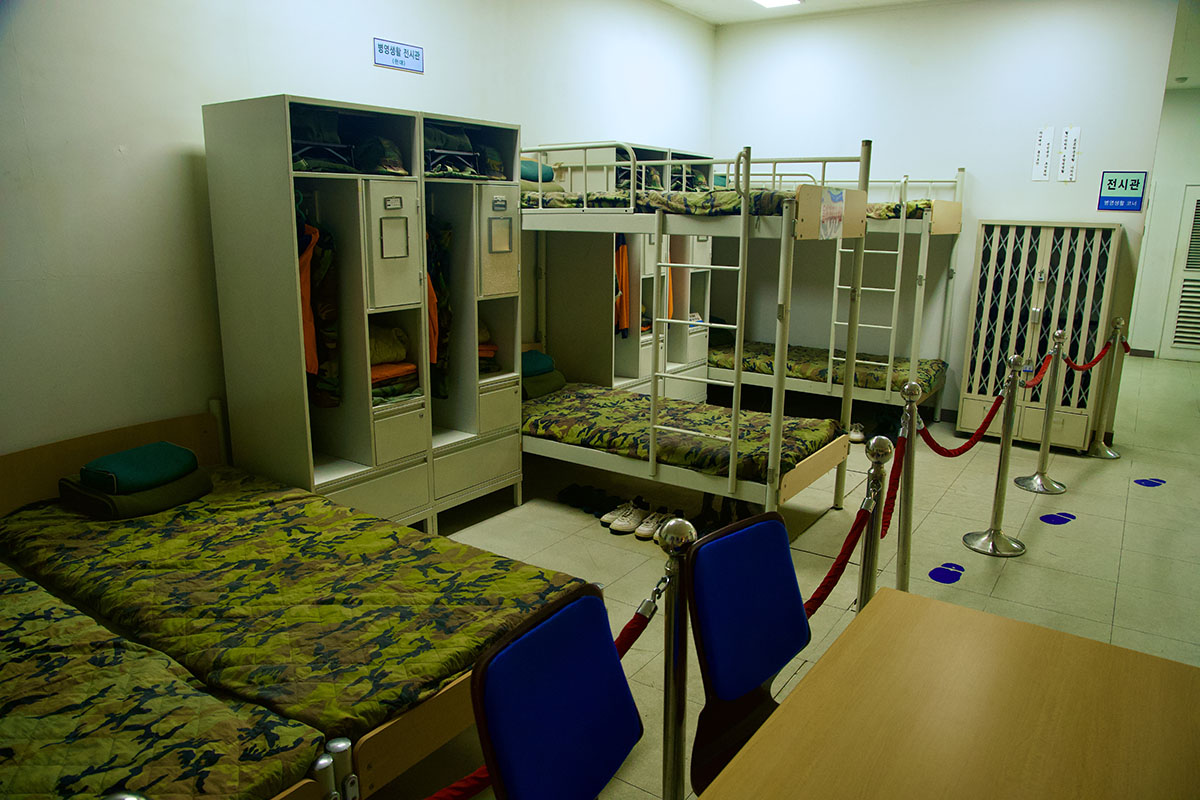The Prevalence of Asbestos in WWII-Era Military Homes
Common Uses of Asbestos in Military Housing
Asbestos was widely used in military homes during World War II due to its heat resistance and durability. Common applications included:
- Insulation: Asbestos was used to insulate pipes and walls, helping to keep buildings warm.
- Fireproofing: Many military structures had asbestos materials to protect against fire hazards.
- Flooring and Ceiling Tiles: Asbestos was often found in tiles, making them both durable and resistant to damage.
Materials Containing Asbestos
Various materials in military homes contained asbestos, which increased the risk of exposure. These included:
- Roofing Materials: Asbestos was used in shingles and roofing felt.
- Wall Panels: Many barracks had wall panels made from asbestos-containing materials.
- Heating Systems: Asbestos was commonly used in heating systems, including boilers and ducts.
Extent of Asbestos Use During WWII
The use of asbestos peaked during World War II, with significant quantities being utilized in military construction. Key points include:
- High Demand: The war effort created a high demand for durable materials, leading to extensive use of asbestos.
- Widespread Application: Asbestos was found in nearly all branches of the military, affecting many service members.
- Long-lasting Presence: Even after the war, many of these materials remained in use, posing ongoing health risks to veterans and their families.
Health Risks Associated with Asbestos Exposure
Asbestosis: A Chronic Lung Condition
Asbestosis is a serious lung disease caused by inhaling asbestos fibers. It can lead to:
- Shortness of breath, especially during physical activity.
- Persistent cough that may worsen over time.
- Chest tightness or pain.
This condition develops slowly and can take many years to show symptoms, making early detection challenging.
Mesothelioma: A Rare and Aggressive Cancer
Mesothelioma is a type of cancer primarily linked to asbestos exposure. Key points include:
- It affects the lining of the lungs, abdomen, or heart.
- Symptoms may not appear until decades after exposure.
- Treatment options are limited, and the prognosis is often poor.
Mesothelioma is a type of cancer primarily linked to asbestos exposure, and many veterans who served in asbestos-saturated environments, such as Marine Corps bases face increased risk of developing this aggressive disease.
Lung Cancer and Other Respiratory Issues
Asbestos exposure significantly increases the risk of lung cancer. Other respiratory problems can include:
- Chronic obstructive pulmonary disease (COPD).
- Increased risk of infections like pneumonia.
- General decline in lung function over time.
Veterans exposed to asbestos should monitor their health closely and seek regular check-ups.
Asbestos Exposure Across Different Military Branches
Veterans from all branches of the U.S. military faced risks of asbestos exposure. Each branch had unique situations that increased these risks:
Navy and Coast Guard: High-Risk Environments
- Shipbuilding: Asbestos was commonly used in the construction of ships, submarines, and cutters.
- Engine Rooms: Personnel working in engine rooms were particularly vulnerable due to the heavy use of asbestos for insulation and fireproofing.
- Maintenance Work: Regular maintenance on vessels often involved handling asbestos-containing materials.
Army and Marine Corps: Exposure in Vehicles and Barracks
- Vehicles: Asbestos was used in military vehicles for insulation and heat resistance, putting mechanics and drivers at risk.
- Barracks: Many barracks built during WWII contained asbestos in walls and ceilings, exposing service members living there.
- Deployment Risks: Marines often experienced asbestos exposure during deployments, especially in older buildings.
Air Force: Asbestos in Aircraft and Bases
- Aircraft Maintenance: Air Force mechanics were exposed to asbestos while working on aircraft engines and other components.
- Insulation: Asbestos was used in aircraft for fireproofing and insulation, increasing exposure risk during repairs.
- Base Facilities: Many Air Force bases had buildings that contained asbestos, posing risks to all personnel stationed there.
Long-Term Health Impacts on Veterans
Latency Period of Asbestos-Related Diseases
Veterans exposed to asbestos often face a long wait before symptoms appear. This delay can be many years, sometimes even decades. Here are some key points about this latency period:
- Delayed Symptoms: Many veterans may not notice any health issues until years after exposure.
- Regular Check-Ups: It’s important for veterans to have regular health check-ups to catch any problems early.
- Awareness: Understanding the risks can help veterans seek medical advice sooner.
Symptoms and Early Detection
Recognizing the signs of asbestos-related diseases is crucial for veterans. Common symptoms include:
- Shortness of Breath: Difficulty breathing can be an early warning sign.
- Persistent Cough: A cough that doesn’t go away may indicate a problem.
- Chest Pain: Any unusual pain in the chest should be checked by a doctor.
Early detection of asbestos-related diseases like mesothelioma in marine veterans can lead to better treatment options and improved outcomes.
Impact on Quality of Life
Asbestos-related diseases can significantly affect a veteran’s daily life. Some impacts include:
- Physical Limitations: Breathing difficulties can limit activities and reduce mobility.
- Emotional Strain: Dealing with a serious illness can lead to anxiety and depression.
- Financial Burden: Medical costs and loss of income can create financial stress for veterans and their families.
Veterans need support and resources to manage these challenges effectively.
Asbestos in Military Family Housing
Congressional Investigations and Findings
In 2018, Congress looked into the safety of military family housing. They wanted to find out if families were exposed to dangerous materials like asbestos. The investigation found that many homes had asbestos, which could harm the health of military members and their families. Some key points from the findings include:
- Asbestos was found in various military housing units around the world.
- Many families were not informed about the presence of asbestos in their homes.
- The military did not keep proper records about the condition of materials that contained asbestos.
Risks to Military Families
The presence of asbestos in military family housing poses serious risks. Families living in these homes may unknowingly disturb asbestos materials, leading to exposure. Here are some risks:
- Health Hazards: Breathing in asbestos fibers can lead to serious diseases, including lung cancer and asbestosis.
- Lack of Awareness: Many residents are unaware of the dangers, increasing the risk of exposure.
- Impact on Families: Not just service members, but also spouses, children, and elderly relatives living in these homes are at risk.
Efforts to Mitigate Asbestos Exposure
To address the dangers of asbestos in military housing, several steps have been proposed:
- Regular Inspections: Conduct thorough inspections of military family housing to identify and manage asbestos.
- Inform Residents: Ensure that families are informed about the presence of asbestos and the risks involved.
- Removal and Remediation: Develop plans for safely removing or sealing asbestos materials to protect residents.
Historical Context of Asbestos Use in the Military
Rise of Asbestos Use During WWII
Asbestos became widely used in the military during World War II. Its unique properties made it a popular choice for various applications. Key points include:
- Heat Resistance: Asbestos can withstand high temperatures, making it ideal for insulation in ships and aircraft.
- Durability: The material is strong and long-lasting, which was essential for military structures.
- Cost-Effectiveness: Asbestos was relatively cheap, allowing for mass production of military equipment.
Continued Use Through the Cold War
After WWII, the military continued to use asbestos extensively. This period saw:
- Increased Production: Tons of asbestos were used in building ships, vehicles, and military bases.
- Widespread Exposure: Many service members across all branches were exposed to asbestos, often without knowing the risks.
- Regulatory Oversight: There was little regulation regarding asbestos use, leading to its continued presence in military environments.
Phasing Out Asbestos in the 1980s
By the 1980s, awareness of the health risks associated with asbestos began to grow. This led to:
- Regulatory Changes: New laws were introduced to limit asbestos use in military applications.
- Safer Alternatives: The military started to explore and implement safer materials for insulation and fireproofing.
- Ongoing Risks: Despite the phase-out, many veterans still face health risks due to past exposure.
Veterans’ Stories and Experiences
Personal Accounts of Asbestos Exposure
Veterans have shared many stories about their experiences with asbestos during their service. These accounts often highlight the unexpected dangers they faced:
- Unexpected Discoveries: Many veterans were unaware of the presence of asbestos in their living and working environments. They often learned about the risks only after experiencing health issues.
- Long-lasting Effects: Some veterans describe how their exposure has led to chronic health problems, affecting their daily lives and activities.
- Emotional Burden: The psychological impact of knowing they were exposed to a harmful substance weighs heavily on many veterans, leading to feelings of anxiety and uncertainty about their health.
Challenges in Receiving a Diagnosis
Getting a proper diagnosis for asbestos-related diseases can be difficult for veterans. They often face several hurdles:
- Lack of Awareness: Many healthcare providers may not immediately connect symptoms to asbestos exposure, leading to delays in diagnosis.
- Complex Medical History: Veterans often have complicated medical histories, making it challenging to pinpoint the cause of their health issues.
- Stigma and Silence: Some veterans hesitate to speak about their exposure due to stigma, which can prevent them from seeking help.
Navigating VA Benefits and Compensation
Veterans who have been affected by asbestos exposure may be eligible for various benefits, but navigating the system can be tough:
- Understanding Eligibility: Many veterans are unsure of what benefits they qualify for, which can lead to missed opportunities for support.
- Complicated Claims Process: The process of filing claims can be overwhelming, with many forms and requirements to meet.
- Support Networks: Connecting with organizations that specialize in veteran support can help ease the process and provide necessary guidance.
Preventive Measures and Safety Protocols
Protective Equipment and Training
To reduce the risk of asbestos exposure, military personnel and workers should follow these guidelines:
- Use Personal Protective Equipment (PPE): Always wear appropriate gear, such as masks and gloves, when working in areas where asbestos may be present.
- Receive Proper Training: Attend training sessions on how to handle asbestos safely and understand the risks involved.
- Follow Safety Protocols: Adhere to established safety procedures when working in or around buildings that may contain asbestos.
Modern Alternatives to Asbestos
Asbestos has been largely replaced by safer materials. Some alternatives include:
- Fiberglass: Used for insulation and fireproofing, it is safer and effective.
- Mineral Wool: This material is also used for insulation and is non-toxic.
- Cellulose: Made from recycled paper, it is a safe option for insulation.
Government Regulations and Policies
To protect service members and veterans, several regulations have been put in place:
- Asbestos Management Plans: Military installations must have plans to manage and reduce asbestos risks.
- Regular Inspections: Buildings are regularly inspected for asbestos to ensure safety.
- Public Awareness Campaigns: Efforts are made to educate military personnel and their families about the dangers of asbestos exposure.
Legal and Financial Support for Affected Veterans
VA Benefits and Compensation
Veterans who have been exposed to asbestos during their service may qualify for various benefits from the Department of Veterans Affairs (VA). These benefits can include:
- Disability Compensation: Monthly payments based on the severity of the service-connected disability.
- Healthcare Benefits: Access to medical care through the VA system, often without out-of-pocket costs for those with higher disability ratings.
- Additional Support: Programs like Aid and Attendance and Survivors Benefits for those who need extra help.
Legal Options for Veterans
While veterans cannot sue the military for injuries sustained during active duty due to the Feres doctrine, they can pursue legal action against companies that supplied asbestos. This can lead to:
- Economic Damages: Compensation for lost wages and medical expenses.
- Non-Economic Damages: Payment for pain and suffering.
- Punitive Damages: Additional compensation meant to punish the responsible parties.
In fact, marine veterans affected by asbestos-related lung cancer may be eligible to file lung cancer lawsuits due to asbestos exposure to seek compensation for medical costs, lost wages, and other damages.
Steps to File a Claim
Veterans looking to file a claim for benefits or compensation can follow these steps:
- Gather Documentation: Collect medical records and service history.
- File a Claim: Submit the claim online, by mail, or in person at a VA office.
- Seek Assistance: Consider working with a VA-accredited representative for guidance.
Understanding these options is crucial for veterans affected by asbestos exposure, as it can significantly impact their quality of life.
Asbestos Exposure During Wartime Deployments
Exposure in Foreign Conflicts
During various military conflicts, service members faced significant risks of asbestos exposure. Notable conflicts include:
- World War II
- Korean War
- Vietnam War
- Gulf War (Desert Storm)
- Grenada
- War in Afghanistan (Operation Enduring Freedom)
These wars often involved the destruction of buildings that contained asbestos, releasing harmful fibers into the air.
Impact of Bombings and Destruction
In combat zones, bombings and other destructive events frequently led to the release of asbestos fibers. This exposure could occur without the knowledge of the service members, as they were often in close proximity to damaged structures. The dangers included:
- Contaminated Air: Asbestos fibers could linger in the air, posing a risk to anyone nearby.
- Inhalation Risks: Service members could unknowingly inhale these fibers, leading to long-term health issues.
- Lack of Awareness: Many military personnel were unaware of the dangers of asbestos at the time, increasing their risk of exposure.
Protective Measures for Deployed Personnel
To mitigate the risks of asbestos exposure, several protective measures should be considered:
- Training: Service members should receive training on identifying asbestos-containing materials.
- Protective Gear: Use of appropriate protective equipment when working in potentially contaminated areas.
- Regular Inspections: Conducting inspections of military facilities to identify and manage asbestos risks.
Understanding the history and risks associated with asbestos exposure during wartime is crucial for veterans and their families.
The Role of Advocacy and Awareness
Raising Awareness Among Veterans
Advocacy plays a crucial role in informing veterans about the dangers of asbestos exposure. Here are some key points:
- Education: Many veterans are unaware of the risks associated with asbestos. Advocacy groups work to educate them about potential health issues.
- Community Outreach: Events and workshops help spread the word about asbestos-related diseases and encourage veterans to seek medical advice.
- Sharing Stories: Personal accounts from veterans who have faced asbestos-related health issues can motivate others to take action.
Advocacy Groups and Their Efforts
Various organizations are dedicated to supporting veterans affected by asbestos. Their efforts include:
- Legal Assistance: Helping veterans navigate the complex process of filing claims for benefits related to asbestos exposure.
- Health Resources: Providing information on health screenings and treatment options for asbestos-related conditions.
- Support Networks: Creating communities where veterans can share experiences and support each other.
Educational Resources and Outreach
To further assist veterans, advocacy groups offer a range of resources:
- Informational Materials: Brochures and online content that explain the risks of asbestos and how to get help.
- Workshops and Seminars: Regular events that focus on health education and legal rights for veterans.
- Online Platforms: Websites and social media channels that provide updates on asbestos-related news and resources.















